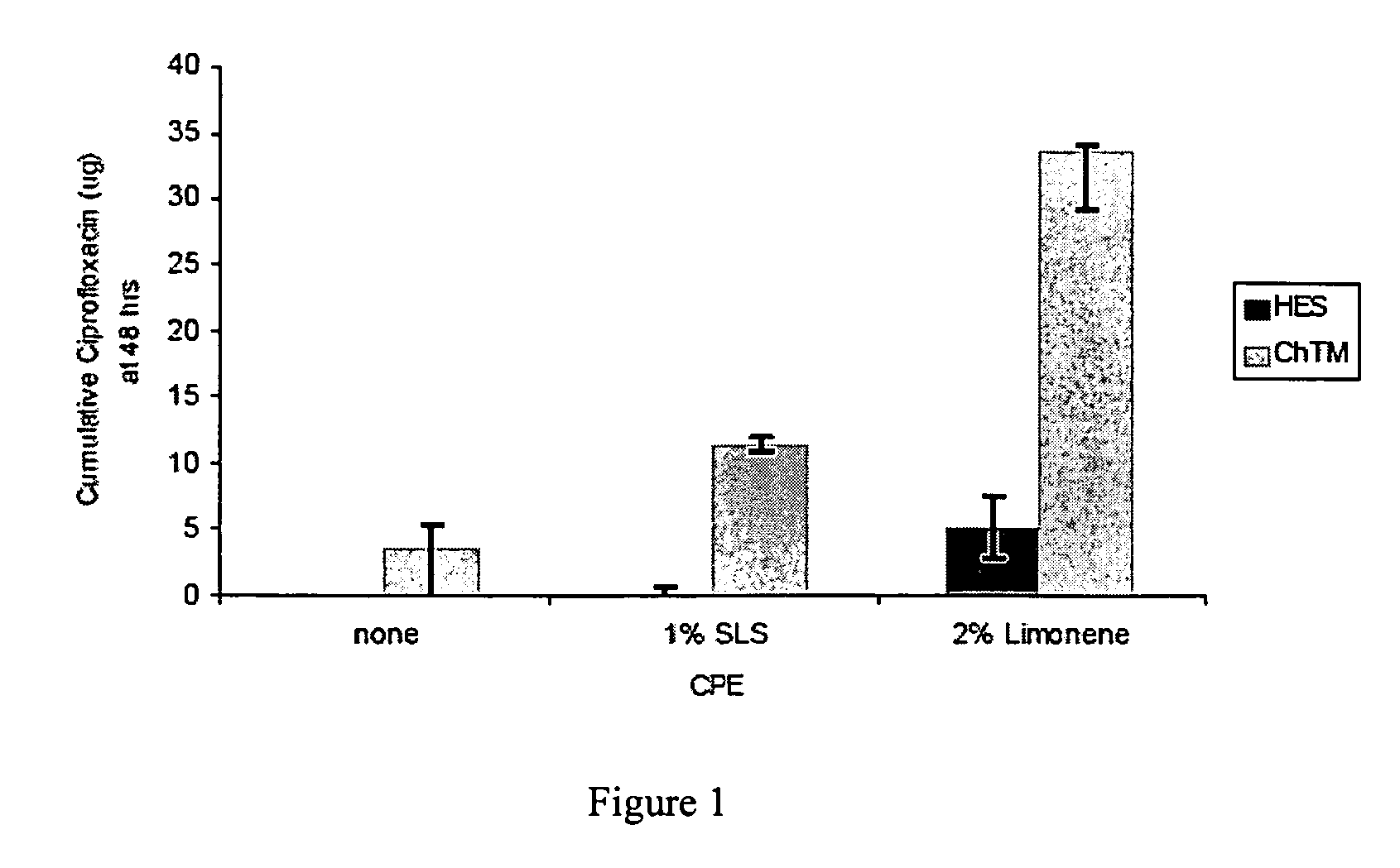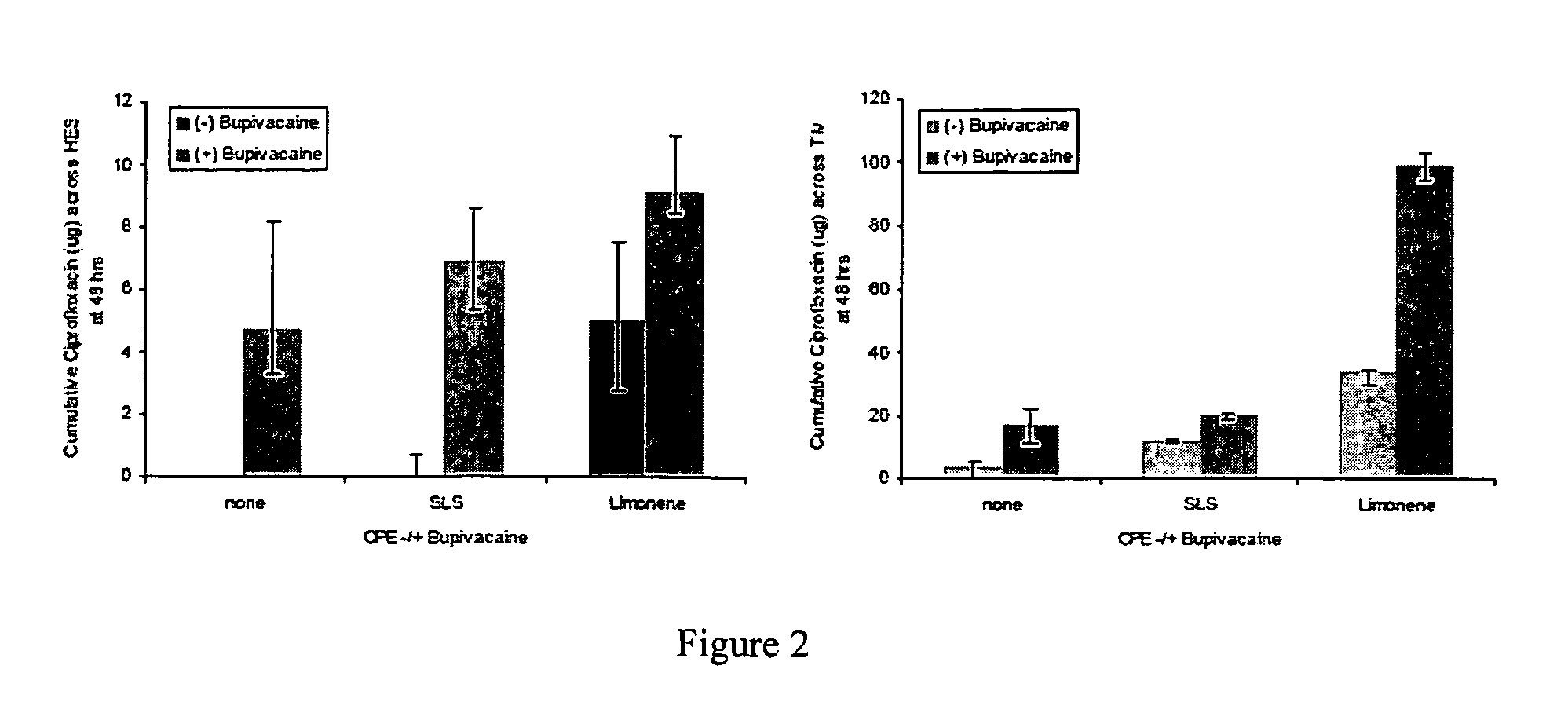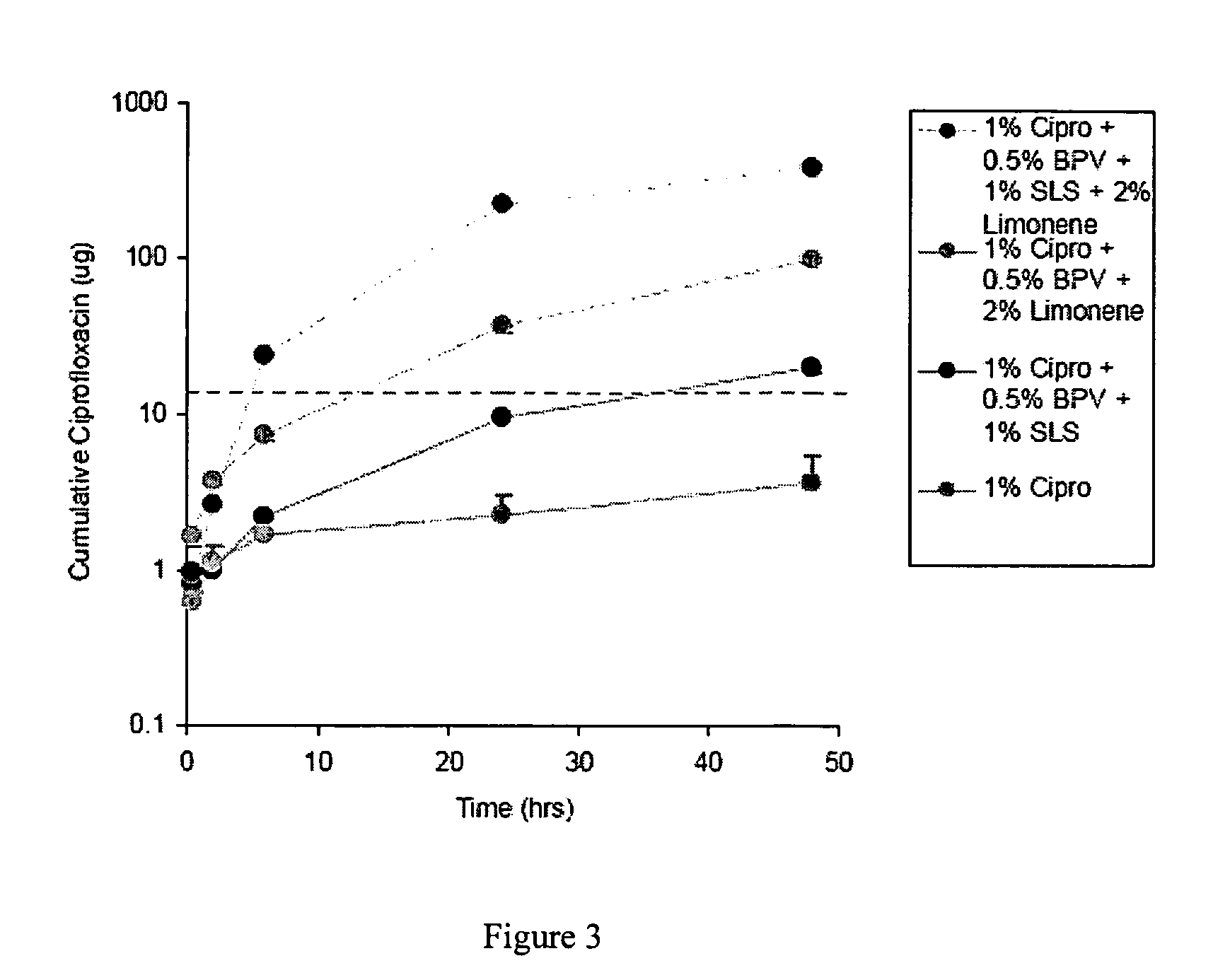Tympanic membrane permeating ear drops and uses thereof
a technology of tympanic membrane and ear drops, which is applied in the direction of drug compositions, amide active ingredients, senses disorders, etc., can solve the problems of patient compliance issues, lack of effective drug concentration at the site, and difficulty in diagnosis and treatment of om, so as to maximize exposure and concentration, the effect of increasing the flux of the agen
- Summary
- Abstract
- Description
- Claims
- Application Information
AI Technical Summary
Benefits of technology
Problems solved by technology
Method used
Image
Examples
example 1
Effects of Chemical Penetration Enhancers on the Permeability of the Chinchilla Tympanic Membrane
[0078]Localized drug delivery to the middle ear has been limited to invasive perforation of the tympanic membrane (“TM”) because of the TM's impermeability to most small molecules. The lateral surface of the TM is a stratified, squamous, keratinizing epithelium that is continuous with that of the external ear canal, and comprises the outermost of the TM's trilayer structure; its composition is identical to that of the epidermis and stratum corneum found elsewhere on the body's surface, except that it consists of 3-5 corneocyte layers rather than the 15-20 layers that cover the rest of the body. The medial, inner-most layer of the TM is also cellular, but consists of a single layer of low cuboidal epithelial cells. The middle layer between the epithelia comprises a complex arrangement of fibroelastic connective fibers, nerve endings, and vasculature [4]. Though fewer than 10 cell-layers a...
example 2
In Situ Hydrogel Formulations and their Use in Trans-Tympanic Membrane Drug Delivery
[0088]Localized, sustained drug delivery for treatment of otitis media (OM) can increase antibiotic efficacy and improve patient compliance, which together reduce the selective pressures responsible for antibiotic resistance generation. Increased permeability of the tympanic membrane (TM) to ciprofloxacin can be achieved using mixtures of various classes of chemical penetration enhancers (CPEs) individually, or in combination to minimize toxicity.
[0089]In situ gelation can be achieved by physical or chemical cross-linking using a number of mechanisms. Sensitivity to pH, light, temperature, and force can each provide the mechanism for controlled gelation, the choice of which depends on the site of application, the desired gelation kinetics, and the intended release kinetics of the incorporated therapies. Therapy administered to the external auditory meatus (EAM) for treatment of OM benefits from a rap...
example 3
Polyelectrolyte Complexes
[0129]Methods: Polyelectrolyte complexes based on chitosan as the cationic component and chondroitin sulfate (CS, low molecular weight), dextran sulfate (DS, low molecular weight), hyaluronic acid (HA, molecular weight 700 kDa), alginic acid (AA, medium molecular weight), or carboxymethyl cellulose (CMC, medium molecular weight) as the anionic component were prepared by dissolving the polymers individually in aqueous solutions and mixing the polymers by co-extruding them through a 25G double barrel syringe. Each polymer was dissolved at 3 wt % unless otherwise noted, with the cationic polymer (chitosan) dissolved in 0.3M acetic acid (AAc), 0.2M hydrochloric acid (HCl), or a pH 4 0.3M citric acid buffer and the anionic polymer dissolved in water or phosphate-buffered saline (PBS). Unless otherwise noted, acetic acid was used as the chitosan solvent and water was used as the anionic polymer solvent. In some cases where specified, solution concentrations of 2× ...
PUM
| Property | Measurement | Unit |
|---|---|---|
| minimum inhibitory concentration | aaaaa | aaaaa |
| volume | aaaaa | aaaaa |
| thick | aaaaa | aaaaa |
Abstract
Description
Claims
Application Information
 Login to View More
Login to View More - R&D
- Intellectual Property
- Life Sciences
- Materials
- Tech Scout
- Unparalleled Data Quality
- Higher Quality Content
- 60% Fewer Hallucinations
Browse by: Latest US Patents, China's latest patents, Technical Efficacy Thesaurus, Application Domain, Technology Topic, Popular Technical Reports.
© 2025 PatSnap. All rights reserved.Legal|Privacy policy|Modern Slavery Act Transparency Statement|Sitemap|About US| Contact US: help@patsnap.com



